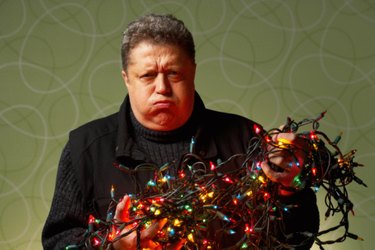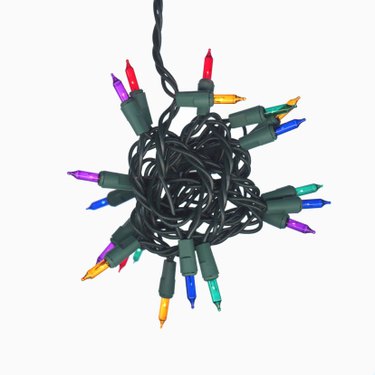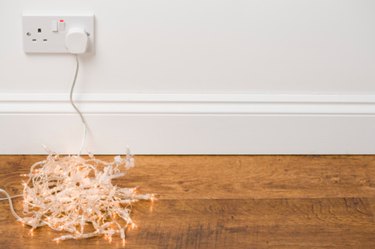
Christmas lights typically run on either a series circuit or a parallel circuit. If you are ready to put up your Christmas lights and notice one of the strands has gone out, you most likely have lights that run on a series circuit. A parallel circuit is a better choice, because the strand will still work even if one bulb burns out.
Series Circuits
Video of the Day

Some strands of Christmas lights use a series circuit, also known as a closed circuit. The current goes to each bulb in order, without going in any other direction. All components of the strand of lights work in a path. If one bulb burns out, or one bulb is taken out of the strand, no charge will move through the circuit. The strand will stay off because the series has been interrupted, and the path broken.
Video of the Day
Parallel Circuits

The other type of Christmas light strands uses a parallel circuit. This is a closed electrical circuit where the current is wired in parallel, like rungs on a ladder. The current is divided into at least two different paths. Energy flows only through a common path to complete the circuit. In the case of Christmas lights, this means that there is more than one current going to the bulbs. If one burns out, the others will still lighted because the the current going to each one is separate.
Replacing Bulbs
Do not replace a bulb from a 35-light strand into a strand that holds 50 lights. The voltages will be different. Always unplug the lights before replacing any burned-out bulbs. If your lights run on a parallel circuit, if one bulb burns out, it's best to replace it as soon as you can. If a bulb is left out of the socket for too long, the other bulbs may overheat. With one light out, the other bulbs are taking more of the voltage than they were meant to hold.
Christmas Light Tips

Before hanging any Christmas lights, be sure to plug them in to see if they are working. Nothing is worse than hanging the lights and then realizing one of the strands isn't working. Do not string more than three strands together, and only plug the same types of strands into each other. Store similar types of strands together for easy reference the following year. Plug the lights into a surge protector to protect from overloading.
- Physics 24/7: Physics Tutorial - Series Circuits and Christmas Lights
- Physics 24/7: Physics Tutorial - Parallel Circuits and Hazard Lights
- PlanetChristmas: Incandescent Minilights
- Christmas Decorations & Gifts Store: Christmas Lights & Holiday Light
- Christmas Lights: Christmas Lights Tutorial